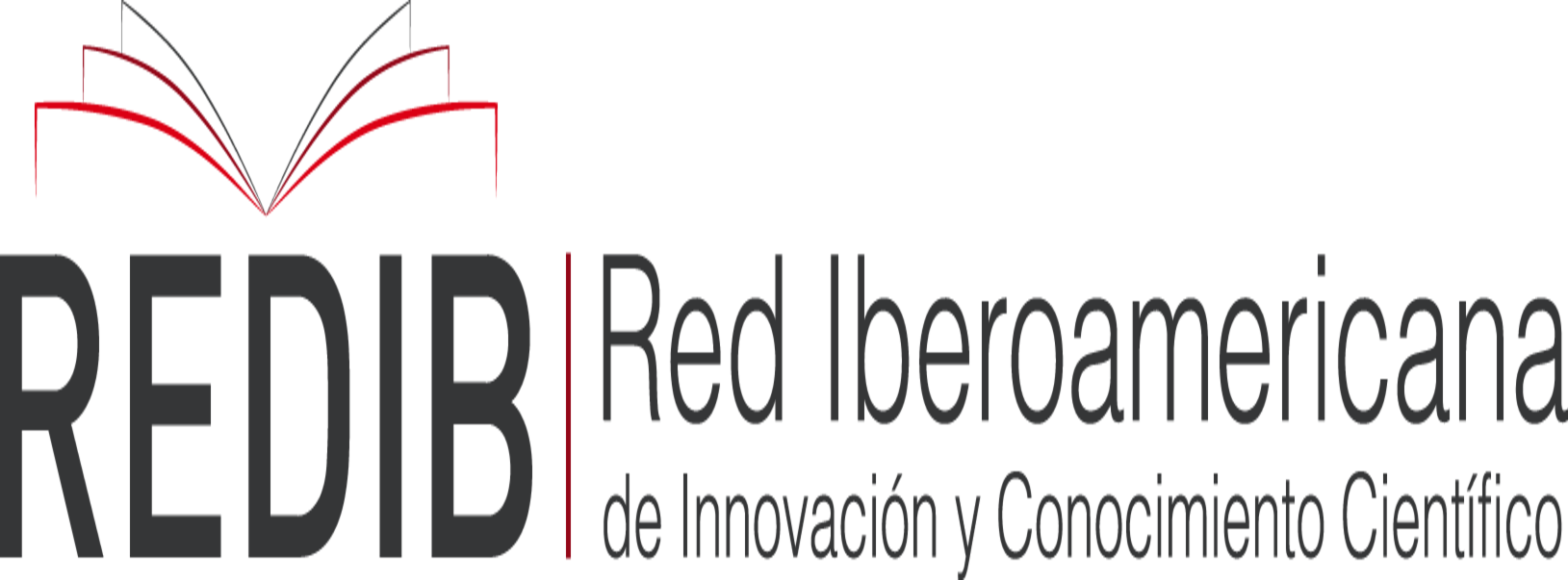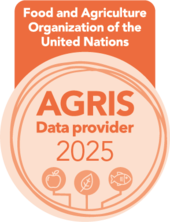Consorcios microbianos aplicados en un sistema de producción de plántulas de aguacate cultivar “Criollo”
DOI:
https://doi.org/10.17268/manglar.2022.002Resumo
Se aplicaron consorcios microbianos en un sistema de producción de plántulas de aguacate (Persea americana Mill.) cultivar ‘Criollo’, evaluándose posibles influencias en el crecimiento y estado nutricional de los patrones. Se evaluaron 4 tratamientos en un diseño de bloques completamente al azar (DBCA). Las semillas utilizadas fueron sembradas en sustrato estéril (tierra negra y pomina; 3:1) colocado en bolsas de vivero (polietileno, capacidad: 2,2 kg). Las inoculaciones de microrganismos (Glomus spp, Trichoderma spp., Bacillus spp., Pseudomonas spp.) se realizaron a los 70, 100, 120 y 150 días después de la siembra (DDS). Las variables altura de planta, diámetro de tallo e índice de verdor fueron evaluadas a lo largo del ensayo (80, 110, 140 y 170 DDS); una vez culminado el ensayo (170 DDS) se evaluó la concentración de nutrientes en tejido, materia seca de tallos, hojas y raíces. Existieron diferencias estadísticamente significativas a los 170 DDS para: altura de planta, diámetro de tallo y contenido de clorofila; el análisis de concentración de nutrientes en tejido reportó valores dentro de los parámetros adecuados para la especie e incremento en la concentración del Cu. Esta investigación reporta el efecto favorable de los microorganismos evaluados en el crecimiento de las plántulas y en la asimilación de nutrientes.
Downloads
Referências
Alemán, J., Ferrera-Cerrato, R., & Alarcón, A. (1998). Endomicorriza-arbuscular. bacterias y vermicomposta en plántulas de aguacate en vivero. Colin CICTAMEX, 1(1), 12-21.
Alvarado, L. (2017). Efecto de microorganismos benéficos en el crecimiento y desarrollo de plántulas de aguacate (Persea americana) para los valles interandinos del Ecuador. (Tesis de pregrado). Universidad de las Américas, Ecuador.
Arellano, L. (2017). Efecto de abonos orgánicos en el crecimiento en vivero de aguacates nativos de Ometepec y Tlacoachistlahuaca, Guerrero. (Tesis de maestría). Universidad Autónoma de Guerrero. México.
Arias, J. S., Hurtado-Salazar, A., & Ceballos-Aguirre, N. (2021). Current overview of Hass avocado in Colombia. Challenges and opportunities: a review. Ciência Rural, 51(8), e20200903.
Barra, P. J., Inostroza, N. G., Mora, M. L., Crowley, D. E., & Jorquera, M. A. (2017). Bacterial consortia inoculation mitigates the water shortage and salt stress in an avocado (Persea americana Mill.) nursery. Applied Soil Ecology, 111, 39-47.
Bradáčová, K., Florea, A. S., Bar-Tal, A., Minz, D., Yermiyahu, U., Shawahna, R., & Weinmann, M. (2019). Microbial consortia versus single-strain inoculants: an advantage in PGPM-assisted tomato production. Agronomy, 9(2), 105-110.
Broadley, M., Brown, P., Cakmak, I., Rengel, Z., & Zhao. F. (2012). Function of nutrients: micronutrients. En H. Marschner (Ed.), Mineral nutrition of higher plants (pp. 191-248). Adelaide, Australia: Elsevier Academic Press.
Cabrera, E., Bonilla, B., & Aguilar, M. (2018). Interacciones entre plantas y bacterias promotoras de crecimiento vegetal. Revista CITECSA, 10(15), 23-27.
Carreón, A., Aguirre, P., Salvador, G., Mendoza, D., Juárez, R., Martínez, M., & Trejo, D. (2014). Inoculación micorrízico arbuscular en portainjertos de plantas de aguacate cv 'Hass' en viveros de Michoacán México. Revista Mexicana de Ciencias Agrícolas, 5(5), 847-857.
Colquehuanca, G. S., & Blanco, M. W. (2021). Importancia y beneficios del Trichoderma en la producción agrícola. Revista Estudiantil AGRO-VET, 5(2), 78-82.
Colla, G., Rouphael, Y., Di Mattia, E., El‐Nakhel, C., & Cardarelli, M. (2015). Co‐inoculation of Glomus intraradices and Trichoderma atroviride acts as a biostimulant to promote growth. yield and nutrient uptake of vegetable crops. Journal of the Science of Food and Agriculture, 95(8), 1706-1715.
Dhir, B. (2017). Biofertilizers and biopesticides: eco-friendly biological agents. En R. Kumar, A. Sharma y S. Ahluwalia (Eds.). Advances in Environmental Biotechnology (pp. 167-188. Singapore: Springer.
Gluszcek, S., Derkowska, E., Sas-Paszt, L., Sitarek, M., & Sumorok, B. (2020). Influence of bioproducts and mycorrhizal fungi on the growth and yielding of sweet cherry trees. Hort. Sci. (Prague), 47(2), 122-129.
Hamid, B., Zaman, M., Farooq, S., Fatima, S.; Sayyed, R. Z., Baba, Z. A., et al. (2021). Bacterial plant biostimulants: a sustainable way towards improving growth, productivity, and health of crops. Sustainability, 13, 2856.
Kashyap, P., Rai, P., Srivastava, A., & Kumar. S. (2017). Trichoderma for climate resilient agriculture. World Journal of Microbiology and Biotechnology, 33(8), 33-155.
Kheyri, Z., Moghaddam, M., & Farhadi, N. (2022). Inoculation efficiency of different mycorrhizal species on growth, nutrient uptake, and antioxidant capacity of Calendula officinalis L.: A comparative study. Journal of Soil Science and Plant Nutrition.
Kumar, R. Saurabh, K., Kumawat, N., Sundaram, P. K., Mishra, J. S., et al. (2021). Sustaining productivity through integrated use of microbes in agriculture. En G. Seneviratne y J. S. Zavahir (Eds.), Role of Microbial Communities for Sustainability. Microorganisms for Sustainability (pp. 109-145). Singapore : Springer.
Lazare, S., Haberman, A., Yermiyahu, U., Erel, R., Simenski, E., & Dag. A. (2019). Avocado rootstock influences scion leaf mineral content. Agronomy and Soil Science, 1(1), 1-11.
Martínez, J., Muena, V., & Ruiz, R. (2014). Nutrición y Fertilidad en Paltos. La Cruz, Chile: Instituto de Investigaciones Agropecuarias (INIA).
Martínez‐Medina, A., Fernandez, I., Lok, G. B., Pozo, M. J., Pieterse, C. M., & Van Wees. S. C. (2017). Shifting from priming of salicylic acid‐to jasmonic acid‐regulated defences by Trichoderma protects tomato against the root knot nematode Meloidogyne incognita. New Phytologist, 213(3), 1363-1377.
Marzaini, B., & Mohd-Aris, A. (2021). Plant growth-promoting microorganisms isolated from plants as potential antimicrobial producers: A review. Pertanika Journal of Tropical Agricultural Science, 44(2), 255-273.
Marra, R., Lombardi, N., Piccolo, A., Bazghaleh, N., Prashar, P., Vandenberg, A., & Woo, S. (2022). Mineral biofortification and growth stimulation of lentil plants inoculated with trichoderma strains and metabolites. Microorganisms, 10, 87.
Mastouri, F., Björkman, T., & Harman, G. (2010). Seed treatment with Trichoderma harzianum alleviates biotic, abiotic and physiological stresses in germinating seeds and seedlings. Phytopathology, 100(11), 1213-1221.
Menge, J., LaRue, J., Labanauskas, C., & Johnson, E. (1980). The effect of two mycorrhizal fungi upon growth and nutrition of avocado seedlings grown with six fertilizer treatments. Journal of the American Society for Horticultural Science, 105(3), 400-404.
Montañez, B. (2009). Efecto de la micorrización en plantas de aguacate (Persea americana L.) durante la fase de vivero en suelos provenientes de los Llanos Orientales. (Tesis de maestría). Universidad Nacional de Colombia. Colombia.
Nzanza, B., Marais, D., & Soundy, P. (2012). Yield and nutrient content of tomato (Solanum lycopersicum L.) as influenced by Trichoderma harzianum and Glomus mosseae inoculation. Scientia horticulturae, 144 (1), 55-59.
Orozco-Mosqueda, M. D. C., Flores, A., Rojas-Sánchez, B., Urtis-Flores, C. A.; Morales-Cedeño, L. R., et al. (2021). Plant growth-promoting bacteria as bioinoculants: attributes and challenges for sustainable crop improvement. Agronomy, 11, 1167.
Ruano-Rosa, D., Arjona-Girona, I., & López-Herrera, C. J. (2018). Integrated control of avocado white root rot combining low concentrations of fluazinam and Trichoderma spp. Crop Protection, 112, 363-370.
Santoyo, G., Guzmán-Guzmán, P., Parra-Cota, F.I., Santos-Villalobos, S. D. L., Orozco-Mosqueda, M. D. C., & Glick, B. R. (2021). Plant growth stimulation by microbial consortia. Agronomy, 11, 219.
Selladurai, R., & Awachare, C. M. (2019). Nutrient management for avocado (Persea americana Mill.). Journal of Plant Nutrition, 43(1), 38-147.
Sotomayor, A., Viera, W., Viteri, P., Posso, M., Racines, M., González, A., & Villavicencio, A. (2019a). Manual técnico para la producción de plantas injertas de aguacate (Persea americana Mill.) de alta calidad. Quito, Ecuador: Instituto Nacional de Investigaciones Agropecuarias.
Sotomayor, A., Gonzáles, A., Jin Cho, K., Villavicencio, A., Jackson, T., & Viera, W. (2019b). Effect of the application of microorganisms on the nutrient absorption in avocado (Persea americana Mill.) seedlings. Journal of the Korean Society of International Agriculture, 31(1), 17-24.
Schoebitz, M., López, M. D., Serrí, H., Martínez, O., & Zagal, E. (2016). Combined application of microbial consortium and humic substances to improve the growth performance of blueberry seedlings. Journal of soil science and plant nutrition, 16(4), 1010-1023.
Thomloudi, E., Tsalgatidou, P., Douka, D., Spantidos, T., Dimou, M., Venieraki, A., & Katinakis, P. (2019). Multistrain versus single-strain plant growth promoting microbial inoculants-The compatibility issue. Hellenic Plant Protection Journal, 12(2), 61-77.
Todeschini, V., AitLahmidi, N., Mazzucco, E., Marsano, F., Gosetti, F., Robotti, E., & Wipf, D. (2018). Impact of beneficial micro-organisms on strawberry growth, fruit production, nutritional quality, and volatilome. Frontiers in plant science, 9(1), 1611.
Uribe, G. E., Viera, V. F., Sampedro, A. X., Cho, K. J., & Villavicencio, A. B., Flores, F. J. (2021). Colonization of Fusarium oxysporum transformed with the red fluorescence protein gene (tdTomato) mediated by Agrobacterium tumefaciens in roots of two avocado cultivars. Research, Society and Development, 10(2), e22010212554.
Viera, W., Ponce, L., Morillo, E., & Vásquez, W. (2016a). Genetic variability of avocado germplasm for plant breeding. International Journal of Clinical and Biological Sciences, 1(1), 24-33.
Viera, A., Sotomayor, A., & Viera, W. (2016b). Potencial del cultivo de aguacate (Persea americana Mill.) en Ecuador como alternativa de comercialización en el mercado local e internacional. Rev Científica y Tecnológica UPSE, 3(3), 1-9.
Viera, W., Campaña Cruz, D. F., Lastra, A., Vásquez, W., Viteri, P., & Sotomayor, A. (2017a). Micorrizas nativas y su efecto en dos portainjertos de tomate de árbol (Solanum betaceum Cav.). Bioagro, 29(2), 105-114.
Viera, W., Campaña, D., Castro, S., Vásquez, W., Viteri, P., & Zambrano, J. (2017b). Effectiveness of the arbuscular mycorrhizal fungi use in the cherimoya (Annona cherimola Mill.) seedlings growth. Acta Agronómica, 66(2), 207-213.
Viera, W., Campaña, D., Gallardo, D., Vásquez, W., Viteri, P., & Sotomayor, A. (2017c). Native mycorrhizae for improving seedling growth in avocado nursery (Persea americana Mill.). Indian Journal of Science and Technology, 10(25), 1-13.
Viera, W., Noboa, M., Martínez, A., Báez, F., Jácome, R., Medina, L., & Jackson, T. (2019). Trichoderma asperellum increases crop yield and fruit weight of blackberry (Rubus glaucus) under subtropical Andean conditions. Vegetos, 32(2), 209-215.
Viera, W., & Jackson, T. (2020). Ecuador demonstrates a sustainable way forward for small farmer producers. Chronica Horticulturae, 60(3), 19-22.
Viera, W., Noboa, M., Martínez, A., Jácome, R., Medina, L., & Jackson, T. (2020a). Trichoderma sp. application increases yield and individual fruit weight of blackberries grown by small farmers in Ecuador. Acta Horticulturae, 1277, 287–292.
Viera-Arroyo, W. F, Tello-Torres, C. M., Martínez-Salinas, A. A., Navia-Santillán, D. F., Medina-Rivera, L. A., Delgado-Parra, A. G., et al. (2020b). Biological control: A tool for sustainable agriculture, with a point of view of its benefits in Ecuador. Journal of the Selva Andina Biosphere, 8, 128-149.
Viera, W., Cartagena, Y., Toaquiza, J., Gaona, P., Viteri, P., Sotomayor, A., & Medina, L. (2021). Response of 'Hass' avocado under different nitrogen and potassium fertilizer regimes in subtropical Ecuador. Acta Horticulturae, 1327, 175-180.
Wang, Y., Liu, H., Shen, Z., Miao, Y., Wang, J., Jiang, X., Shen, Q., & Li, R. (2022a). Richness and antagonistic effects co-affect plant growth promotion by synthetic microbial consortia. Applied Soil Ecology, 170, 104300.
Wang, L., Yang, D., Ma, F., Wang, G., & You, Y. (2022b). Recent advances in responses of arbuscular mycorrhizal fungi - Plant symbiosis to engineered nanoparticles. Chemosphere, 286, 131644.
Woo, S. L. & Pepe, O. (2018). Microbial consortia: promising probiotics as plant biostimulants for sustainable agriculture. Frontiers in plant science, 9(1), 1801.
Zhang, L., Chu, Q., Zhou, J., Rengel, Z., & Feng, G. (2021). Soil phosphorus availability determines the preference for direct or mycorrhizal phosphorus uptake pathway in maize. Geoderma, 403, 115261.
Downloads
Publicado
Edição
Secção
Licença
Direitos de Autor (c) 2022 Andrea Sotomayor, Paúl Mejía, Daniel Morocho, Pablo Gaona, Pablo Viteri, Lorena Medina, William Viera

Este trabalho encontra-se publicado com a Licença Internacional Creative Commons Atribuição 4.0.

Manglar is an open access journal distributed under the terms and conditions of Creative Commons Attribution 4.0 International license









